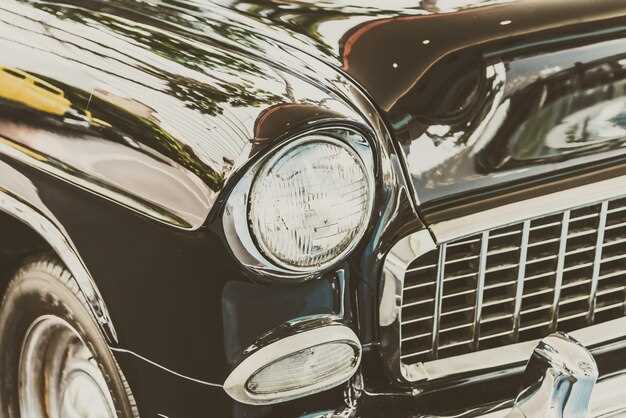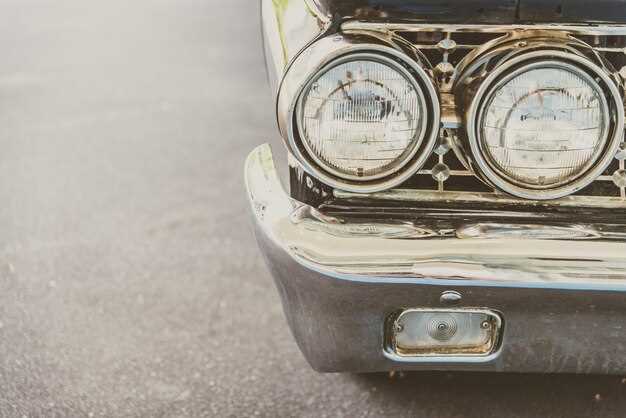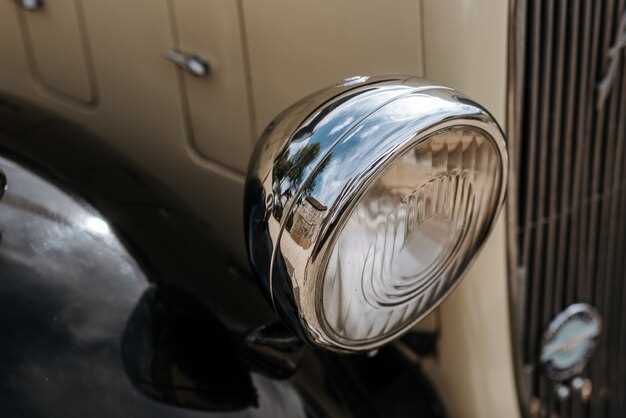
Classic cars hold a unique charm and represent a significant investment for many enthusiasts. However, one of the most formidable adversaries these vintage vehicles face is rust. The effects of rust can be not only unsightly but can also compromise the structural integrity of a car, leading to costly repairs and restoration efforts. Understanding how to prevent rust from taking hold is crucial for maintaining the beauty and longevity of classic automobiles.
One of the first steps in rust prevention is to ensure that any pre-existing rust is treated promptly. This not only stops further corrosion but also serves as a foundation for effective protective measures. Regular maintenance plays a pivotal role; washing your classic car frequently to remove dirt, salt, and other corrosive agents is essential. Furthermore, applying wax or sealants can create a protective barrier against the elements.
In addition to routine cleaning, storing your classic vehicle in a controlled environment can significantly reduce the risk of rust. Covering the car with a breathable car cover and parking it in a dry garage can help mitigate moisture build-up. Ultimately, a combination of proper care, regular inspections, and strategic storage will help ensure that your classic car remains a source of pride and joy for years to come.
Preventing Rust on Classic Cars: Tips and Techniques
Rust is a classic car owner’s worst enemy. Preventive measures are essential to maintain the vehicle’s integrity and aesthetics. Here are some effective tips and techniques to keep rust at bay:
- Regular Washing: Clean the car frequently, especially after exposure to salt, dirt, and moisture. Pay attention to wheel wells and undercarriage.
- Drying: After washing, thoroughly dry the car to minimize moisture accumulation. Use a soft microfiber towel for best results.
- Waxing: Apply high-quality car wax every few months. Wax acts as a protective barrier against moisture and contaminants.
- Paint Protection: Consider using a paint sealant or ceramic coating. These products provide a more durable layer of protection compared to traditional wax.
In addition to surface care, structural integrity is crucial:
- Rustproofing Treatments: Invest in professional rustproofing, especially for older models. These treatments can be applied to vulnerable areas to prevent rust development.
- Inspect Seals and Gaskets: Regularly check seals around windows and doors. Replace any worn or damaged seals to prevent water leaks that may lead to rust.
- Storage Conditions: Store the vehicle in a climate-controlled garage. Avoid damp environments and consider using a dehumidifier if necessary.
Lastly, routine inspections are vital:
- Regular Inspections: Check for any signs of rust at least every season. Early detection allows for prompt repair before rust spreads.
- Use Rust Inhibitors: Apply rust inhibitors to exposed metal areas, especially in high-moisture environments.
- Repair Scratch Damage: Address scratches and chips immediately to prevent them from developing into larger rust spots.
By implementing these techniques, classic car owners can effectively prevent rust and ensure their vehicles remain in excellent condition for years to come.
Choosing the Right Paint and Coating to Protect Your Classic Car
When it comes to protecting your classic car from rust, the choice of paint and coating plays a crucial role. High-quality paint not only enhances the vehicle’s appearance but also provides a vital barrier against moisture and environmental pollutants. Selecting the appropriate type involves understanding the different finishes and properties available.
First, consider using a two-component polyurethane or epoxy paint. These paints are known for their durability and resistance to chipping, cracking, and UV exposure. Unlike single-stage paints, two-component systems create a chemical bond that significantly enhances the hardness and longevity of the finish. Investing in a high-quality primer before applying top coats is equally essential, as it promotes adhesion and provides additional corrosion resistance.
Furthermore, adding a clear coat over the base paint can provide an extra layer of protection. This transparent layer shields the paint from scratches, UV rays, and chemical exposure, extending the life of the color beneath it. Look for UV-resistant clear coats to prevent fading and ensure your classic car retains its aesthetic appeal over time.
For those restoring vehicles with original finishes, consider using products specifically designed for classic cars. These specialty paints are formulated to closely match the original colors and finishes while offering modern protection against rust and wear.
Aside from choosing the right paint, applying coatings such as ceramic or vinyl wraps can add another dimension of protection. Ceramic coatings offer exceptional resistance against water, dirt, and grime, making maintenance easier and reducing the likelihood of rust formation. Vinyl wraps can also serve as a protective layer, particularly in areas prone to scratches and impacts.
Finally, it is crucial to prepare the surface correctly before any painting or coating application. Thoroughly cleaning, sanding, and priming the surface will ensure optimal adhesion and a flawless finish. Regularly inspecting the paint and addressing any chips or scratches promptly will help maintain the protective qualities and aesthetic of your classic car.
Regular Maintenance Routines to Identify and Prevent Rust Early

Regular maintenance is crucial for preserving the integrity of classic cars and preventing rust formation. Establishing a routine inspection schedule allows owners to catch early signs of corrosion before they escalate into serious issues.
Begin with a thorough visual inspection of the vehicle’s body and undercarriage. Look for signs of rust, particularly in areas commonly affected, such as wheel wells, door sills, and around the trunk. Pay special attention to seams, joints, and areas where moisture can accumulate.
Check for any paint or coating damage, as exposed metal is more susceptible to rust. If you notice any chips or scratches, clean the area and apply touch-up paint or a protective sealant immediately to avert rust development.
Keep the vehicle clean and free from debris. Wash the car regularly to remove dirt, salt, and other contaminants. In winter, consider using a rust-inhibiting wash to further protect against road salt damage.
Inspect rubber seals and gaskets regularly. Damaged seals can allow moisture to enter, promoting rust in vulnerable areas. Replace any worn or cracked seals promptly to maintain a proper seal against rain and humidity.
Utilize a rust prevention spray or treatment on exposed metal surfaces, especially in areas prone to rust. Products designed for classic cars provide protective layers against moisture and air.
Ensure proper drainage in the vehicle. Clear any blocked drains in the windshield, sunroof, and doors to avoid water accumulation. Moisture buildup is a primary contributor to rust development.
If your classic car is stored for extended periods, consider using a climate-controlled environment to prevent moisture-related issues. Additionally, regularly start the engine and move the vehicle to ensure all parts remain functional and dry.
Finally, while routine checks are essential, document findings and maintenance actions. Keeping a detailed record allows you to spot trends over time, helping to prevent significant rust issues in the future.
Storage Solutions that Minimize Rust Risk for Classic Cars

Choosing the right storage solution is crucial for preserving the condition of classic cars and minimizing rust risk. The first step is selecting a dry environment. Humidity is a primary factor that contributes to rust formation, so it is essential to store the vehicle in a location with low moisture levels. A climate-controlled garage or storage facility is ideal, as it regulates temperature and humidity, preventing condensation that leads to rust.
Using a breathable car cover can provide an additional layer of protection against dust and moisture. Unlike plastic covers that trap moisture, breathable covers allow airflow while safeguarding the paint and body from contaminants. Ensure the cover fits snugly and is designed specifically for your classic car model to avoid scratches.
Elevating the vehicle off the ground is another effective measure. Using a set of jack stands or a car lift not only minimizes the risk of moisture seeping from the ground but also allows for better ventilation around the undercarriage. This prevents water accumulation, which is a common source of rust development.
Consider utilizing a dedicated rust inhibitor spray on vulnerable areas, such as wheel wells and undercarriage. These sprays create a protective barrier that shields metal surfaces from moisture. Coupling this with regular inspections can help identify early signs of rust before they escalate into larger issues.
Another practical solution is to maintain a consistent cleaning routine. Regularly washing the car, especially after exposure to rain or road salt, reduces contaminants and grime that can trap moisture against the metal. After washing, ensure thorough drying by using microfiber towels to avoid water spots and residue.
Using a dehumidifier in the storage space can also significantly reduce humidity levels. This appliance absorbs excess moisture from the air, creating an environment less conducive to rust formation. Complementing this with regular checks to ensure proper air circulation in the storage area is crucial.
Ultimately, the combination of a controlled environment, protective coverings, elevation, and regular maintenance will effectively minimize rust risks and help preserve the beauty and structural integrity of classic cars for years to come.
